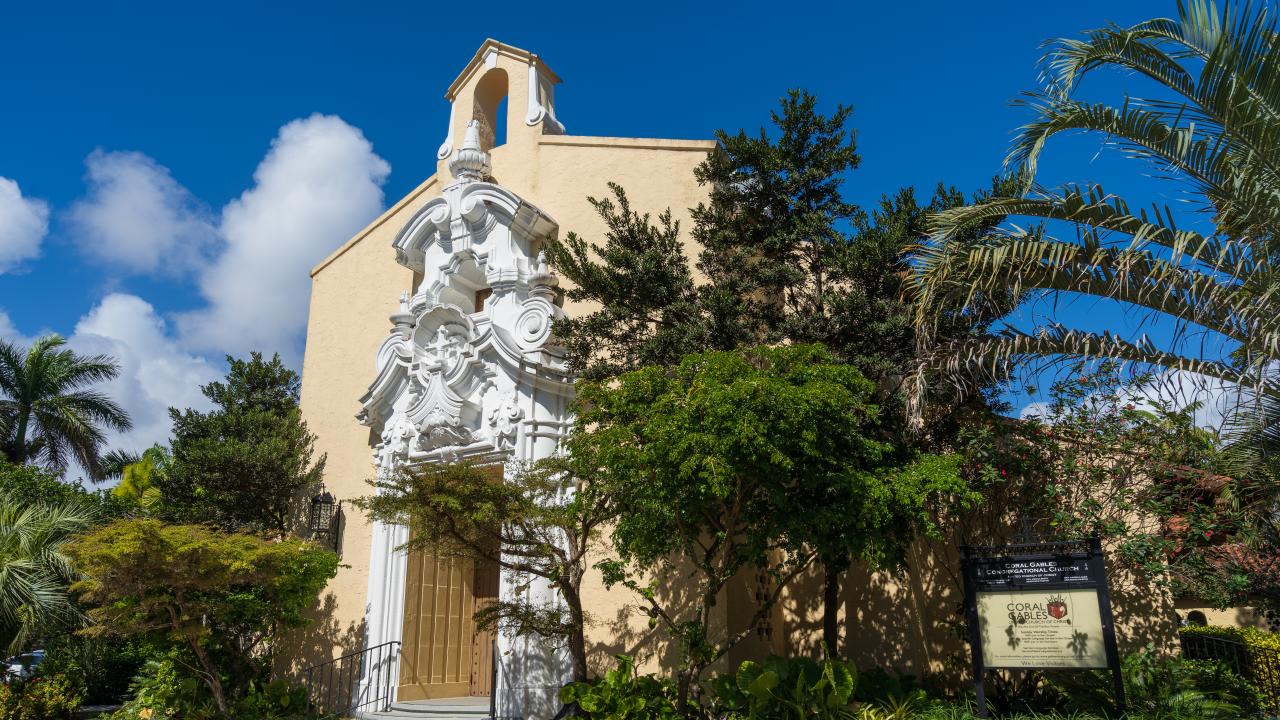The Beginning
Reverend Solomon Greasley Merrick, a Congregational Minister, and his wife, Althea Fink, moved their family from Duxbury, Massachusetts, to the Miami area in 1899, after the harsh northeast winter claimed the life of one of the twin daughters.
As a result of this family tragedy and lured by the vision of warm weather and sunshine, Reverend Merrick took his life savings and purchased a 160-acre tract of land west of Coconut Grove for the sum of $1,100 sight unseen.
He and his 13-year-old son George were the first to arrive at the homestead and were disheartened to find a mostly un-cleared tract, with only scattered guava trees and a crude wooden cabin. But the two quickly went to work, preparing for the arrival of Mrs. Merrick and the other four children: Ethel, Almeda (Medie), Helen, and Charles. The Merricks would later have another child, Richard, the only family member to be born in Coral Gables.
Aided by Bahamian workers, Reverend Merrick and George worked tirelessly, clearing the land of pine and palmetto and planting grapefruit and avocado trees. The family grew award-winning green beans, peppers, guava, tomatoes, eggplant, and okra. Young George would take the vegetables by mule and cart to Miami, where he sold them.
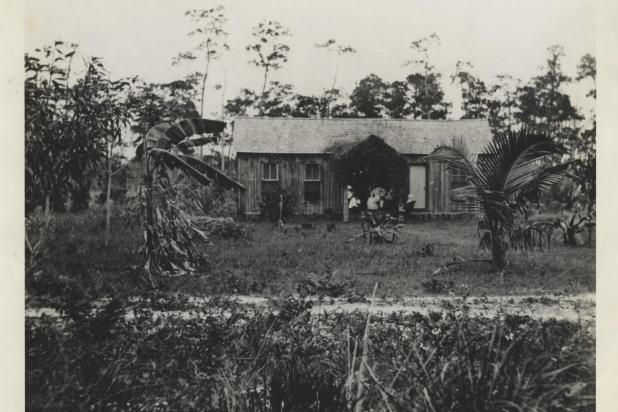
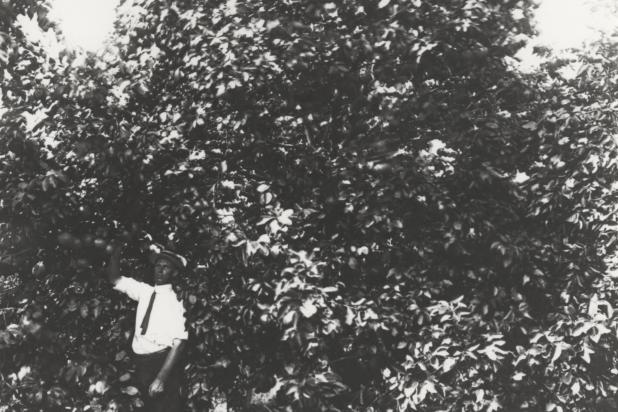
In 1906, the groves began to bear fruit, and the family was able to ship the first carload of grapefruit out of Miami to the northern market. Prosperity allowed the Merricks to construct an extensive addition to their wooden cottage. Made of native coral rock quarried from what would later become Venetian Pool, the addition was designed by Althea and adapted features of New England-style homes to the South Florida environment. The Merrick family named their new home “Coral Gables,” and their growing grapefruit groves the “Coral Gables Plantation.”
Early Development and Financing
George Merrick enrolled in Rollins College in Winter Park in 1907 and then entered New York Law School in 1908. However, his studies were cut short when his father Solomon took ill in 1909, compelling George to come home and help manage the plantation. Solomon Merrick died in 1911, leaving George in charge of the family and the business.
By 1920, Merrick had expanded his land holdings from 160 acres to 1,600 acres. Having been involved in promoting and selling at least 15 subdivisions in the Miami area, he had the land, expertise, and money to move forward with his plans for creating a city. He assembled a team of architects, artists, and engineers. By early 1921, Coral Gables was wholly mapped out on paper. The first lots were sold later that year.
Before long, George Merrick’s original $500,000 ran out. Merrick went from bank to bank seeking financing –and being turned away. Help came from an old college friend. Merrick had not seen Jack Baldwin since they both attended Rollins College when the two met again accidentally. By then, Baldwin had opened an insurance office in Miami. The two men caught a train to Baldwin’s home office, and there, Merrick convinced the company to finance the construction of 100 homes. Baldwin would become vice president and treasurer of the Coral Gables Corporation, which was created in 1925, and was one of Coral Gables’ first City Commissioners.
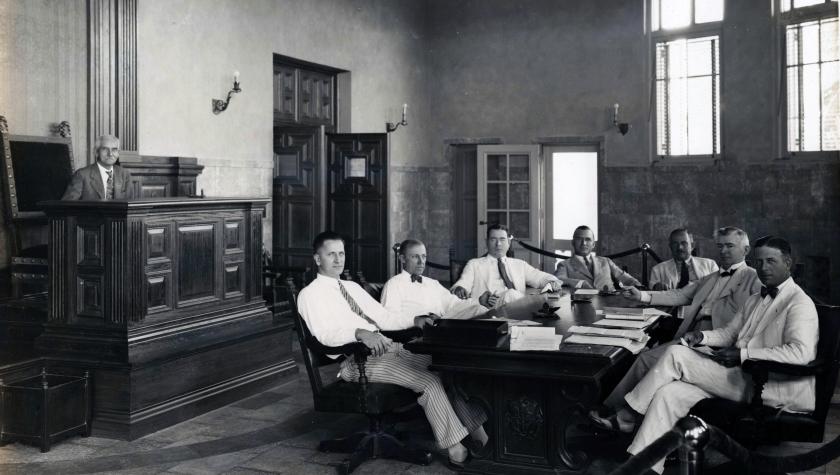
By the time the city was incorporated on April 29, 1925, building permits had amounted to more than $25 million, and the assessed valuation was more than $90 million. The development was so successful that in that same year, Merrick was offered $10 million by New York interests for his holdings in Coral Gables. He refused the offer. After all, his objective was always the creation of a wondrous city, and he still had a lot to accomplish.
George Merrick’s Team
The success of George Merrick’s development of Coral Gables can be attributed to the team of experts he brought together. Though the guiding vision was uniquely Merrick’s, the expertise to translate that vision into reality came from talented artists, architects, and planners.
Perhaps foremost among these was Merrick’s uncle, Denman Fink, who was involved with the project since its inception. He served as Art Director for the Coral Gables Corporation and later was a Professor of Painting at the University of Miami. Fink is credited with the design of landmarks such as Venetian Pool and City Hall, as well as the development of the city plan, including the entrances, plazas, and other public spaces.
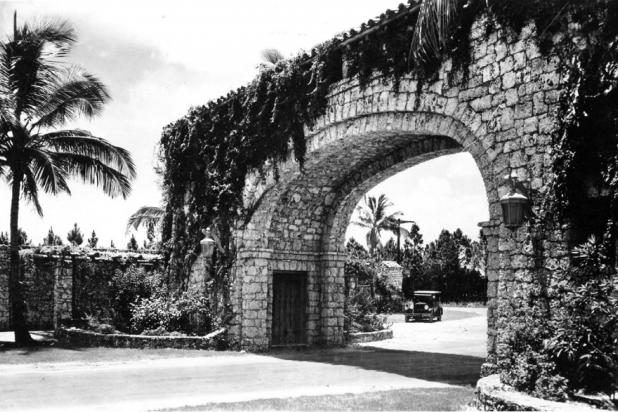
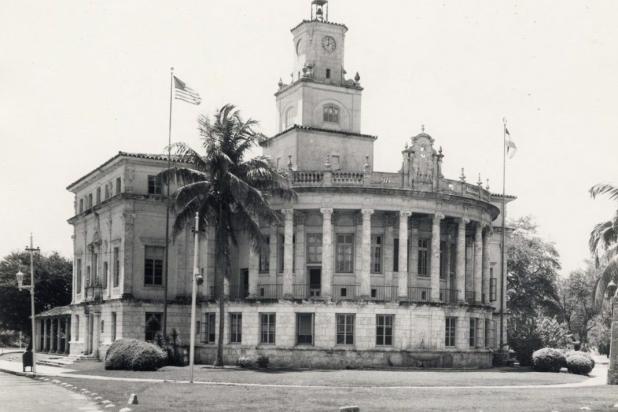
While Fink was the artist that conceived the designs, master architect Phineas Paist carried them to completion. Originally from Pennsylvania, Paist studied at the Drexel Institute of the Pennsylvania Academy of Fine Arts and later in Europe as a Cresson Traveling Scholar. After coming to Miami, Paist was the associate architect on James Deering’s estate, Villa Viscaya, before becoming Supervising Architect of the Coral Gables Corporation.
Finally, landscape architect Frank Button is credited with laying out the grounds for the city’s winding drives, tree-lined boulevards and grand entrances. Button’s work includes the Charles Deering Estate in Buena Vista, Chicago’s Lincoln Park extension, and the grounds of the Vermont state capitol. For his work in Coral Gables, Button imported tropical plants from around the globe. He was killed in 1938 when he was run over by a truck while supervising the planting of trees on Bird Road.
The Building of Coral Gables
Much of Coral Gables was built at a meteoric speed between 1921 and 1926. At that time, what we know as Coral Gables High School was a tent city for construction workers building the city. Hundreds of workers collaborated in the building of Coral Gables, a significant portion of whom were stonemasons from the Bahamas who were experts in coral rock construction.
The site that is today the Venetian Pool was originally a quarry pit that provided the building material for many of Coral Gables’ early houses. The coral rock was also crushed and used to pave the city’s streets. Soon, the quarry became an eyesore. Merrick asked Denman Fink to transform it. The result was a free-form lagoon and palm-fringed island surrounded by shady porticos and vine-covered loggias. Originally named the Venetian Casino, the pool was built in 1924 and is listed on the National Register of Historic Places.
Several significant structures were built during the construction boom. The Congregational Church, for example, was the first church in Coral Gables and was built on land donated by George Merrick to honor his father. Merrick also paid for the construction of Coral Gables Elementary School in 1924. The Dade County School Board later reimbursed him. The Miami-Biltmore Hotel, designed by well-known New York architects Schultze and Weaver, formally opened on January 15, 1926. George’s brother, Charles, constructed the Granada and Alhambra Entrances. These were two of the four entrances completed in the 1920s.
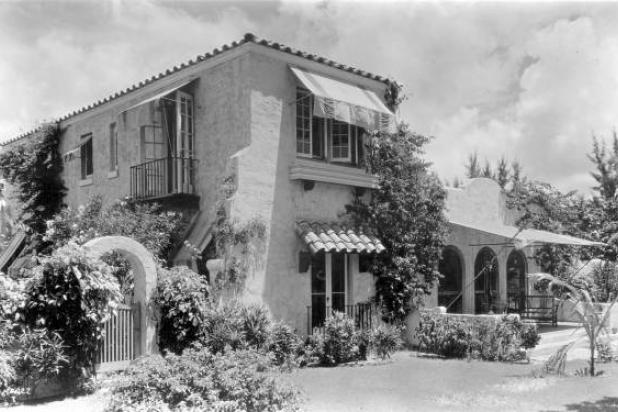
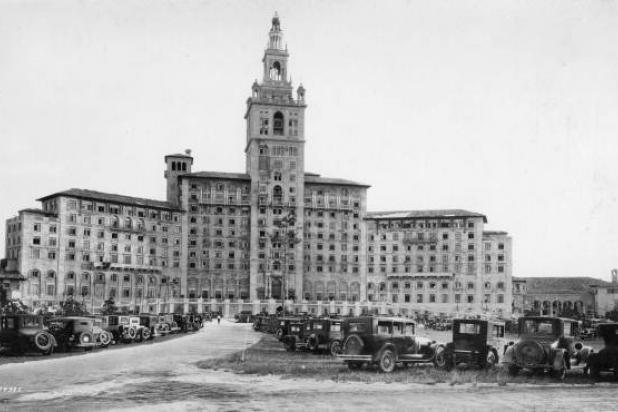
By October 1926, Coral Gables boasted more than 4,000 structures representing an investment of more than $150 million. Structures included 2,792 private homes and apartments, 112 office and commercial buildings, 11 schools, 10 public buildings, two hospital buildings, two university buildings, and six hotels. Already 100 miles of streets had been paved, and 125 miles of sidewalks had been built.
Merrick’s intent, as described in the Corporation’s literature, was to produce structures as permanent as the solid rock with which they were built, an ideal to which the city still strictly adheres.

